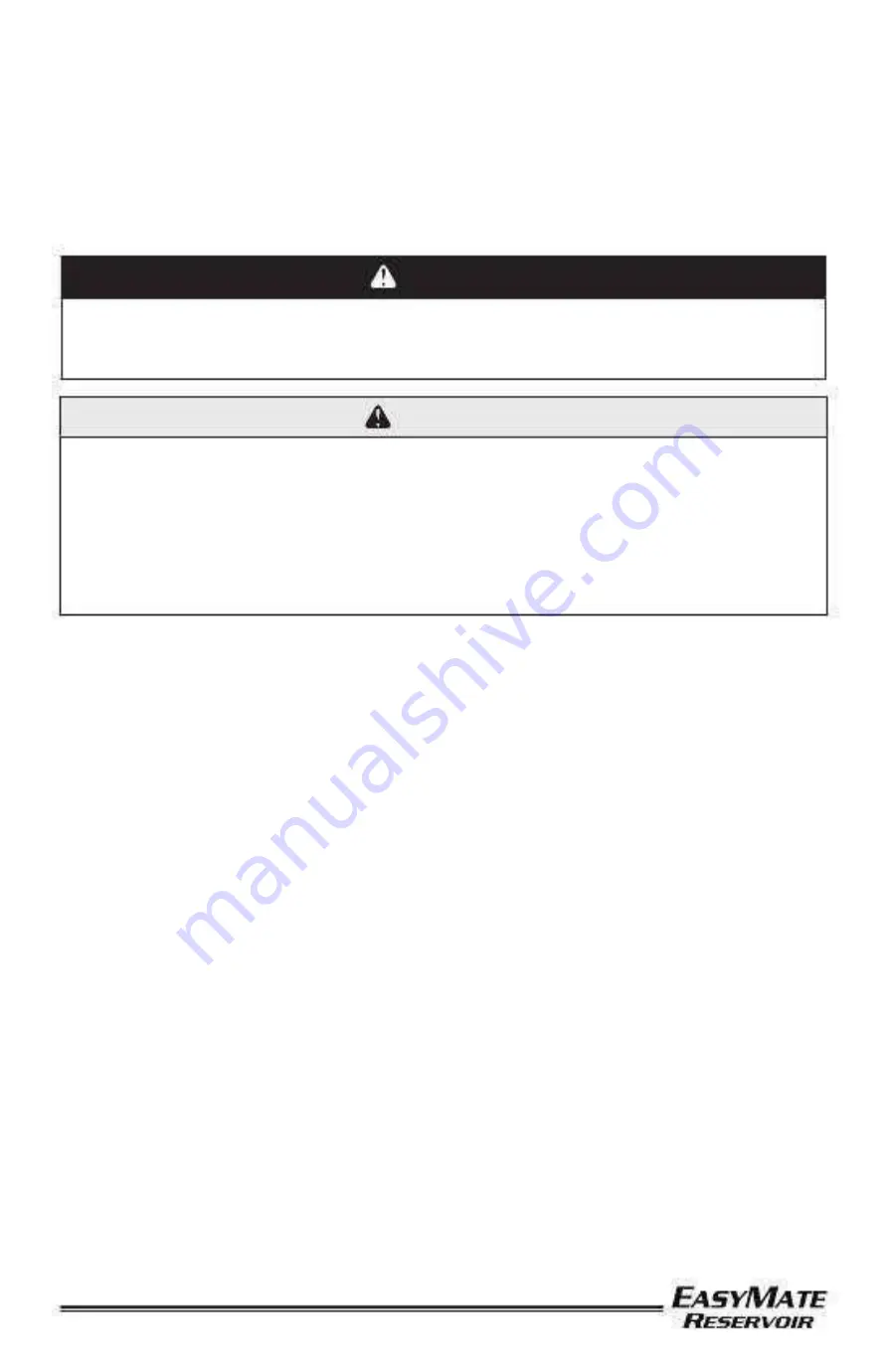
A flashing bot
tom light for a half second “ON” and a half second
“OFF” for an eight (8) second duration, indicates the battery needs
to be replaced.
6. Verify that the Fill Connector is not worn, leaking, or damaged.
NOTE:
Ensure that the Protective Cap for the fill connector is not damaged.
7. Verify that the slots on the Vent Valve are not bent or broken.
8. Verify that the Condensation Collection Container is in place and empty.
NOTE:
d)
Fill Procedure
DANGER
Explosive hazard.
Extreme high pressure can rupture a transfer line. Make
sure
the specified pressure relief valve is present, in the proper location, and
functioning properly on the transfer line assembly.
WARNING
•
Fire hazard
. Liquid oxygen spilled on asphalt or any other combustible surface will
increase the possibility of fire if an ignition source is present. ALWAYS fill the unit on
a noncombustible surface, such as concrete or a steel drip pan.
•
Fire hazard
. Liquid oxygen spillage will occur if the Reservoir is tipped over. Before
transporting, secure the Reservoir containing liquid oxygen in an upright position.
•
Fire hazard
. Oxygen can accumulate in a delivery vehicle. Exhaust vent gases to
outside of vehicle.
1. Wear proper protective clothing during the fill process.
2. For the fill method being used, verify the proper saturation pressure of the fill
source per section (a) “Liquid oxygen source requirements”.
3. Attach one (1) end of the transfer line source adapter to the liquid withdrawal
valve of the source tank. Position the source adapter relief valve straight up.
4. Attach a 0 - 30 psig (0 - 2.07 bar) pressure gauge to the Reservoir Oxygen
DISS Outlet Connection. If the Reservoir contains some liquid oxygen, verify
that the Reservoir pressure gauge reads in the range of 18 - 26 psig (1.24 -
1.79 bar).
If pressure exceeds 28 psig (1.93 bar), service is required. DO NOT fill the
Reservoir.
5. Remove fill connector Protective cap from fill connector on the Reservoir.
Check the fill connectors on both the Reservoir and the fill adapter to ensure
that they are clean and dry. Wipe the connectors with a clean, lint-free cloth or
blow-dry with gaseous oxygen or nitrogen as needed.
6. Using the Vent-to-fill key, open the Vent Valve on the Reservoir by rotating the
tool a ¼ turn counterclockwise.
NOTE:
At this point you may hear a venting noise if the Reservoir unit is
pressurized.
7. Engage the transfer line to the Fill Connector on the Reservoir by aligning
the fill connector on the transfer line directly over the Fill Connector on the
Reservoir, and apply downward force.
8. Maintain a downward force on the transfer line fill adapter while slowly opening
the liquid valve on the source tank. At this point a vigorous audible venting
noise will confirm that the filling process has begun. Adjust the source tank
liquid valve as needed to maintain pressure gauge at 20 - 22 psig (1.38 - 1.52
bar) during the fill.
10
















































